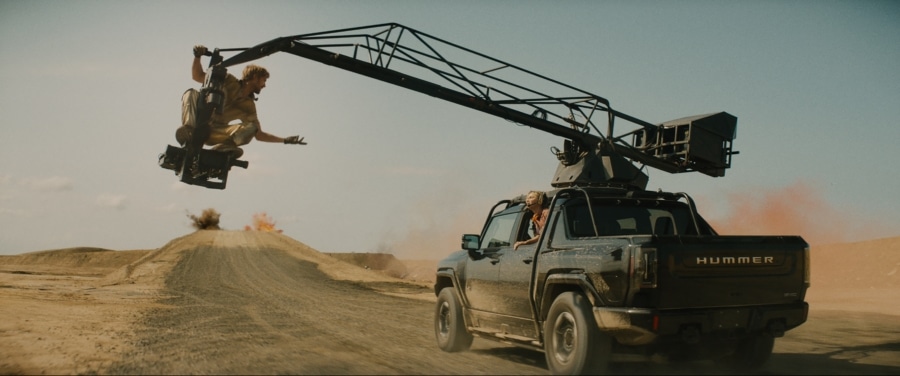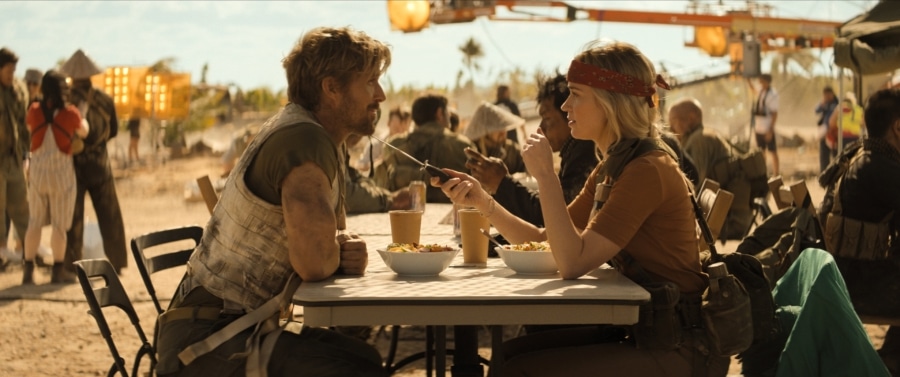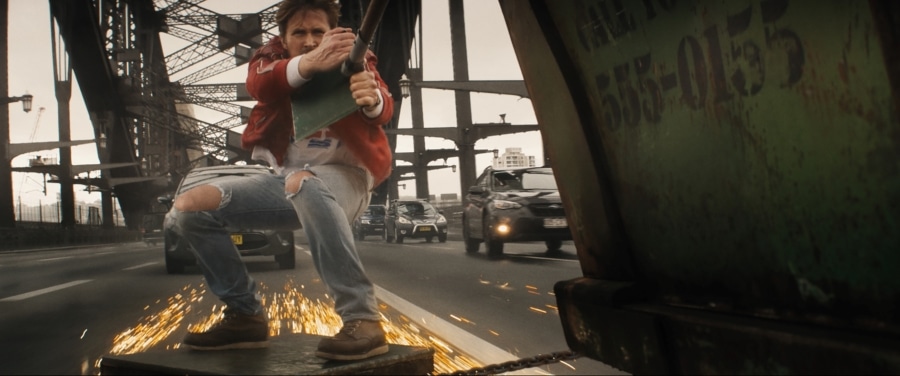Stunt work is another form of art in filmmaking. The power to craft entertaining action set pieces and those performing these feats is essential to cinema. It takes a lot of experience to know how to fall, fly, crash, and dive in a manner that will cause minimal damage. While some build a life-making memorable stunt work in cinema, others have gone on to impact the craft more. Former stuntman and now filmmaker David Leitch understands the importance of the art of stunt work and found a way to utilize his knowledge for his latest film, The Fall Guy.
Though the film isn’t a “thinking man’s” movie, it is an enjoyable piece that pays homage to the craftsmanship of moviemaking and how stunt work is vital to film.
The Fall Guy is directed by Leitch and stars Ryan Gosling (Colt Seavers), Emily Blunt (Jody Moreno), and Aaron Taylor-Johnson (Tom Ryder). The story, written by Glen A. Larson alongside Leitch, has our hero stunt guy Cole brought back to the stunt world after a near-death experience. He’s tasked with finding Ryder after disappearing while making his latest big-budget feature and Jody’s first film as director. Along the way, Cole must rely on his stuntman experience to dodge every bullet, take every punch, and survive every fall to complete his mission. The script itself isn’t a multilayered deal. However, it’s a fine-tuned, tight screenplay with plenty of decent comedy, allowing the cast to sink their teeth in.

The script for The Fall Guy allows the actors to handle their roles authentically. There’s an amount of playfulness that works for most of the cast and the tone of the movie. This notion gave the perfect amount of humor to permit comedy beats to get set up and land perfectly. There were several moments and dialogue that paid off throughout the movie. A case in point was a running gag regarding a joke around Michale Mann’s Miami Vice. The right steps were taken to pay off the joke, and I got a solid laugh.
That’s just one of many breadcrumbs and well-delivered results Leitch and Larson use, allowing the movie to be watched multiple times. Consequently, the well-written script was an excellent gateway for the acting.
One of the selling points is the romance between Gosling’s and Blunt’s characters. The two carry a massive amount of charm that’s matched flawlessly together and apart. There are several scenes the two share that are thoroughly enjoyable to watch. The chemistry comes off as genuine, humorous, and convincing. Additionally, Blunt and Gosling could carry that same energy in their scenes and never allowed The Fall Guy to falter. Leitch’s direction also helped keep the movie’s pacing steady.

The direction is the second but most significant selling point of The Fall Guy. Leitch knows how to direct action and makes a spectacle of it. The film features several creative action set pieces that blend practical and VFX perfectly. Every piece is a step up from the previous one until the film reaches a level of impressiveness that’s worth watching on the big screen. Plus, none of them come off as tedious or overdone.
A great example is the climactic rollercoaster of a ride-action scene. The story has built up to this moment where the characters convene on a single cause. The protagonist and antagonist fight for what becomes the McGuffin, ending with a fantastic moment equivalent to a “chef’s kiss” of excellence.
The Fall Guy can best be summed up as a pure, fun action film. The movie is thoroughly entertaining on all fronts. It has a great cast, a tight and funny script, and remarkable action set-pieces in a nice two-hour and six-minute movie. These components amount to a great summer blockbuster that should be seen on the big screen. I couldn’t get enough of the movie, and I like to believe that was Leitch’s goal. Basically, the film is cinema in all the right ways.

